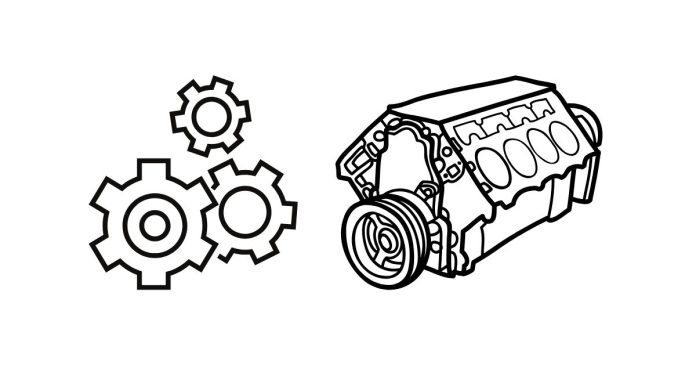If you’re a fan of off-road riding, you’re probably familiar with the legendary Yamaha Banshee, a two-stroke ATV that’s known for its impressive power and speed. One of the most important aspects of maintaining any engine, including the Yamaha Banshee, is knowing the correct torque specifications for various engine components. So, what are the torque specs for a Yamaha Banshee engine? Let’s break down these critical details and explore why getting the torque right is so important for keeping your Banshee running smoothly.
What Is Torque and Why Does It Matter?
Before we dive into the specifics, it’s important to understand what torque is. Torque is essentially the rotational force applied to a fastener, such as a bolt or nut. Using the correct torque is essential for several reasons:
- Proper Tightening: Ensures that bolts and nuts are neither too loose (which could cause parts to come apart) nor too tight (which could lead to stripped threads or damage).
- Preventing Leaks: In engines, correct torque helps maintain seals and gaskets, preventing oil or coolant leaks.
- Engine Performance: Incorrect torque specs can affect engine performance, longevity, and overall safety.
When working on your Yamaha Banshee’s engine, using the correct torque specifications for each part is crucial to maintaining its peak performance and reliability.
Common Torque Specs for Yamaha Banshee Engine
Here are the torque specifications for some of the key components of the Yamaha Banshee engine. Always refer to your service manual for the most accurate and up-to-date torque values, but these are some general guidelines:
- Cylinder Head Bolts
- Torque: 18-20 ft-lbs (24-27 Nm)
- The cylinder head bolts hold the head in place, so it’s crucial to get this torque right to avoid engine overheating or damage.
- Cylinder Bolts
- Torque: 18-20 ft-lbs (24-27 Nm)
- These bolts are responsible for securing the cylinders, and having them properly torqued ensures that the cylinders stay in place during operation.
- Crankcase Bolts
- Torque: 14-18 ft-lbs (19-24 Nm)
- Crankcase bolts hold the crankcase together and must be torqued to the proper specification to prevent leaks and ensure the integrity of the engine.
- Exhaust Manifold Bolts
- Torque: 10-12 ft-lbs (14-16 Nm)
- Proper torque for exhaust manifold bolts ensures that the exhaust system remains sealed, which is essential for engine performance and preventing exhaust leaks.
- Spark Plug
- Torque: 12-15 ft-lbs (16-20 Nm)
- Spark plugs need to be torqued to ensure proper contact and performance without damaging the threads in the cylinder head.
- Transmission and Clutch Components
- Torque: Varies depending on specific components
- It’s important to follow the recommended torque values for transmission and clutch components to prevent issues with shifting and performance.
- Flywheel Bolt
- Torque: 60-65 ft-lbs (81-88 Nm)
- The flywheel bolt is essential for securing the flywheel. A proper torque here ensures the flywheel stays in place, allowing the engine to run without any issues.
- Carburetor and Intake Manifold Bolts
- Torque: 6-8 ft-lbs (8-11 Nm)
- Proper torque on the carburetor and intake manifold ensures a secure seal and proper air/fuel mixture.
Why Getting Torque Right Is Essential
Properly torquing the Yamaha Banshee engine components ensures that the engine operates efficiently and avoids unnecessary wear or damage. If any of these bolts are not torqued correctly, it can result in serious problems, such as:
- Engine Seizure: Under-torqued bolts can lead to oil leaks or overheating, potentially causing the engine to seize.
- Part Damage: Over-torquing can cause bolts to strip or crack parts, which could be costly to repair.
- Poor Performance: Incorrect torque can lead to poor compression, which in turn affects engine performance, throttle response, and fuel efficiency.
The torque specs for the Yamaha Banshee engine are a crucial aspect of engine maintenance. Whether you’re rebuilding the engine, replacing parts, or simply doing routine maintenance, knowing the correct torque values for each component will help ensure your Banshee runs smoothly and lasts for many years.
Always consult your Yamaha Banshee service manual for the most specific and detailed torque specifications. And remember, proper maintenance and attention to detail will keep your ride at its best!
Have you worked on a Yamaha Banshee engine before? Feel free to share any tips or experiences in the comments below!


